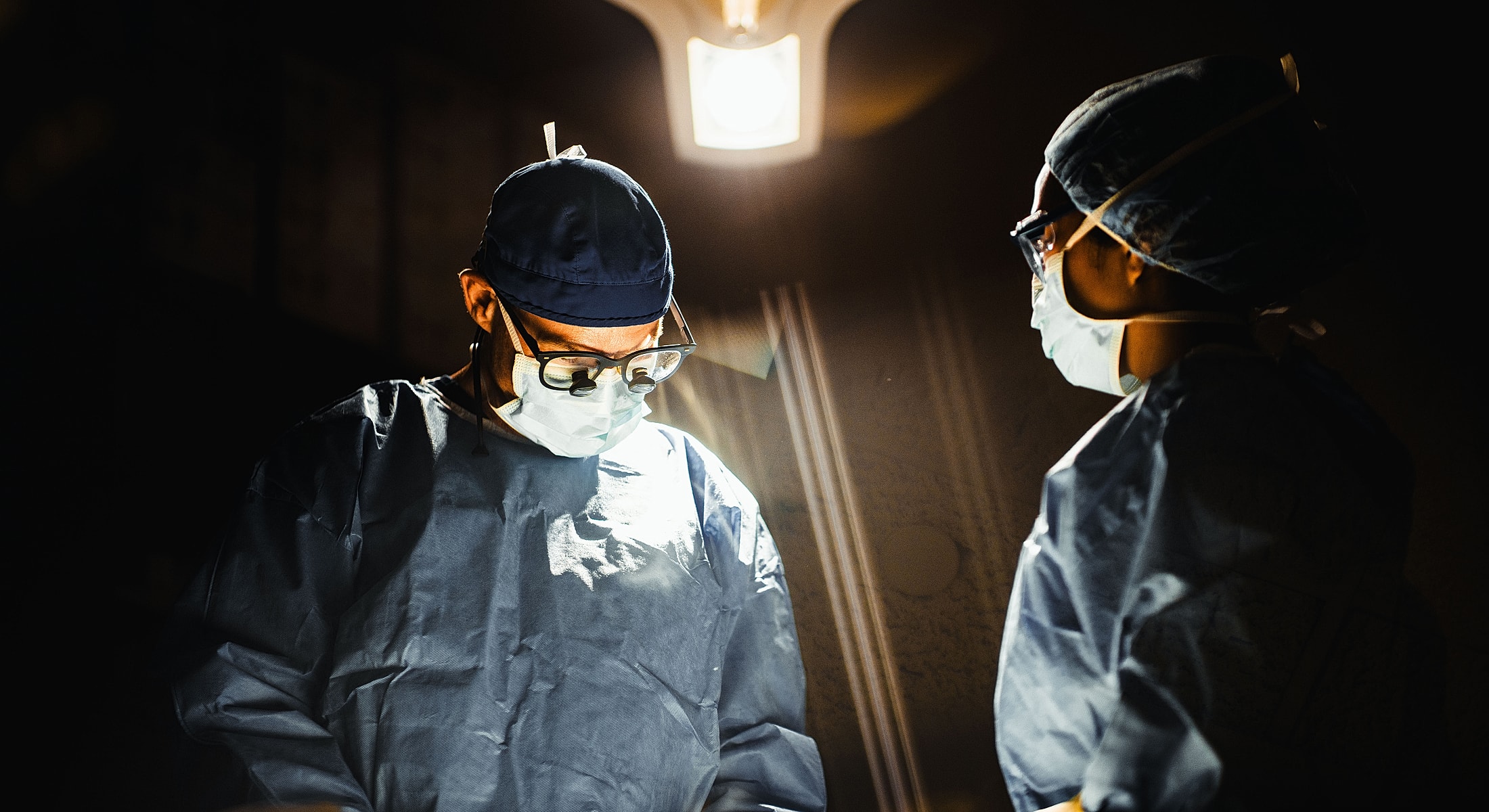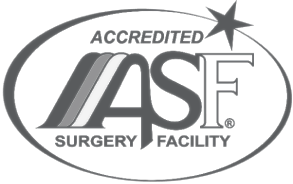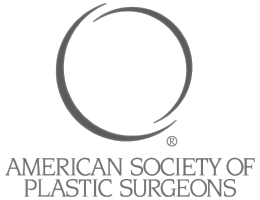









Below is information for various pre and post operation plastic surgery procedures with Dr. Jeff Healy at Healy Plastic Surgery, a leading Hawaii Plastic Surgeon.
Please be sure that you check to ensure you are reading and reviewing the correct information for the procedure you are undergoing.

Congratulations on your decision in having a breast augmentation plastic surgery! This information sheet is designed to give you some general guidelines on what to expect before and after your surgery.
1. Make sure you have all of your questions and concerns answered by Dr. Healy, one of the best Plastic Surgeons in Hawaii or his staff before your plastic surgery. There is no such thing as a dumb question. We want you to have the best information available to help you make the best decisions for yourself.
2. Don’t take any Aspirin, Ibuprofen, Motrin, Advil or medications that contain these substances for two weeks prior to your plastic surgery. These medicines affect the platelets in your blood and cause excessive bruising and swelling and can lead to bleeding complications. If you have a headache you can take Tylenol as it doesn’t affect bleeding.
3. Make arrangements to have somebody drive you to and from the hospital/office on the day of surgery and to your follow-up appointments for the first few days after plastic surgery. You’ll need some extra help around the house for the first several days after surgery as well.
4. Pick up all of your prescriptions before your plastic surgery date if possible. You should receive your prescriptions when you come for your pre-op visit.
5. Get a good nights rest before your plastic surgery. It’s normal to be a little nervous prior to your procedure but try to get some rest.
6. Don’t eat or drink anything for at least 8 hours before your surgery time.

1. You will need to be at the hospital/office at your scheduled arrival time.
2. Check in at the registration desk at the office or surgery center. You will need a photo ID. The plastic surgery center fee is included in the price of your surgery. Dr. Healy’s office will pay the surgery center fee prior to your registration.
3. Wear loose fitting clothing preferably with a shirt that buttons in the front. You will not feel like raising your arms above your head to put on regular clothes.
4. You will change into a gown and a nurse will start an IV.
5. Dr. Healy will see you in the holding area before your plastic surgery. Any last minute questions can be addressed at this time. Dr. Healy will do some measuring and marking on your breasts.
6. The anesthesiologist will meet you and review your health history and talk to you about the anesthesia plan.
7. The actual surgery time will be about 1.5 to 2 hours. After surgery you will be taken to the recovery room. You will stay there for about 1-2 hours as you wake up from the anesthesia. Once you are awake, your pain is controlled and you feel comfortable you will be discharged from this area.
8. Your escort can wait for you during the surgery or they can leave their phone number with the nurse and they will be called when it is time for you to go home.

1. You will be sleepy after your surgery. Go home and rest. Take your medicines as directed.
2. You can eat or drink whatever you want after surgery. You might be a little nauseated from the anesthesia (take your nausea medicine) and at the very least make sure you drink plenty of fluids to keep yourself hydrated.
3. Your chest will be wrapped with an Ace bandage or surgical bra after surgery. Leave this on until your post-op visit with Dr. Healy.
4. You can walk around the house the day of your surgery and if you feel up to it you could go out that evening.
5. You will have some pain and pressure and this is expected. Take the pain medicine and the valium for the pain. If you have a pain pump you will probably require less narcotics for pain control but you will still need some. Do not drink any alcohol when you are taking the pain medicine.
6. Your first post-op visit will usually be the following day with Dr. Healy. At this visit the bandages will be removed and you will be placed into a post-surgical bra. You will want to buy some sports bras that open in the front. For the first 6 weeks you should not wear an underwire or push-up bra. This is to prevent the underwire from rubbing along the incisions and to allow the implants to settle into their position.
7. Don’t be surprised if your implants are higher than expected. The muscles contract and pull the implants into a higher position right after surgery. This muscle contraction can distort the shape of your breasts in the early post-op period. As the muscles relax and get used to the implants, they will settle into their normal position. This usually takes a few weeks but can take up to a few months.
Please reach us at (808) 487-0076 if you cannot find an answer to your question.
This depends on what type of work you do. In general plan to be off of work for 1 week. It may take a little longer for some patients especially if your job is physically demanding.
You can walk the day of your surgery and gradually increase your distance and time each day. You can’t do any strenuous exercise (running, aerobics, weight lifting, lifting anything over 10 pounds) for 6 weeks. Even though you will feel good after a couple of days it takes 6 weeks for the tissues to heal. When you start exercising again the key is to go slow and listen to your body. If you’re having a lot of pain with exercise you need to slow down.
In general you can shower 24 hours after your surgery. If you have a pain pump you may want to wait until the catheters come out- usually 2-3 days after surgery. No soaking in a tub or pool for at least 2 weeks.
Usually around 1 week after surgery. If you are taking the narcotic pain medicine you cannot drive. You will be considered under the influence and could cause injury to yourself and others. Have someone else drive you until you no longer are taking the narcotic pain medicine.
Usually after 1 week. Be cautious and listen to your body. Be aware that anesthesia and the medications you will be taking after your surgery can affect the effectiveness of birth control pills. You should take additional measures to prevent pregnancy in the early post-operative period.
Keeping the wound clean with soap and water and just being patient is the best treatment. Once your steri-strips come off of the incision you can place paper tape (found at any drug store near the band-aids) on the incision to help it heal better. The final appearance of your scars may take up to 1 year. Despite what you hear and read, vitamin E does not help the scars look better and may actually make them look worse. There is no scientific proof that any of the other ointments and creams you read about make any difference in your scar appearance.
No, your implants are mechanical devices that will wear out over time. The average “life expectancy” of implants is around 13 years. Some may last for 30 years with no problems, others may develop problems within months. The manufacturers warranty the implants and will replace them free of charge if they leak or rupture. They will also give you some money to offset the surgery costs during the first 10 years after your initial surgery. You should receive a card with the implant information after your surgery.
Your body will form scar tissue around the implants. Usually this does not cause any problems. Rarely the scar tissue will contract around the implant making it feel firm or hard. Even more rarely you may experience pain or the implant position may shift due to the capsular contracture. If this is severe enough you may require additional surgery to remove the scar tissue around the implants.
Usually you will get a fever, develop redness around the incision or over the breast and may get drainage from the incision. It is important to take all of your antibiotics to help minimize the risk of infection. If you feel you have an infection notify Dr. Healy’s office.
In general you will see Dr. Healy the day after your surgery, 2 and 6 weeks after surgery, 3 and 6 months after surgery and then on a yearly basis. Some patients may require more frequent visits depending on their post-operative course. All of your post-op visits are included in the price of your surgery.
The American Cancer Society recommends that women start to get routine mammograms at age 40. If you have a strong family history of breast cancer or other risk factors, you may need to start earlier. Discuss this with your primary care doctor. When you do get a mammogram inform the technician that you have implants so they can modify the technique to get the most accurate study.
Liposuction is a body contouring procedure designed to remove excess fat from an area and can be performed on many different areas of the body, including the abdomen, flanks, hips, thighs, back, arms, neck, and more. Liposuction is not a weight loss procedure. You will lose some weight when the excess fat is removed but weight loss is not the primary reason to undergo liposuction.
The ideal candidate for liposuction is someone who is at a stable weight, exercises regularly, and eats healthy but finds that certain problem areas will not improve any further with the work they are doing. Patients will often hit a plateau after seeing early improvements.If you still are not happy with your appearance, liposuction can provide a dramatic change. After recovering from your liposuction procedure, clothes will fit better, exercise will be easier and self-confidence will soar.
The vast majority of liposuction procedures are done under general anesthesia. This allows optimal comfort for the patient and also allows Dr. Healy to be more aggressive in removing the unwanted fat. See “Day of Surgery” for further details about general anesthesia.
In certain cases liposuction can be done with just sedation and the “tumescent” solution mentioned earlier. Situations where this option is available would be smaller areas being treated such as the neck, or perhaps small touch-up procedures.
Dr. Healy utilizes the “tumescent” technique for his liposuction procedures, which is the gold-standard way to perform liposuction. One or more small skin incisions will be made in the area to be treated. The tumescent solution is then infiltrated into the fatty tissue.
The tumescent solution contains local anesthetic to minimize the pain afterwards as well as epinephrine to minimize the bleeding that occurs during the procedure. This will help to decrease the bruising and swelling that you may experience after liposuction.
The tumescent solution is allowed to act for 10-15 minutes. After this, the liposuction cannulas will be inserted into the small incisions and the excess fat will be suctioned out. As Dr. Healy is removing the fat, he will sculpt the area to give the best possible contour.
After the liposuction is complete the incisions will be closed with absorbable sutures and you will be placed into a compression garment.
Liposuction removes the excess fat from the area being treated but doesn’t do anything directly to the skin itself. Depending on how much fat is removed and the condition of the skin to begin with, there may be some looseness or laxity in the skin after liposuction. This skin looseness should be temporary as the skin has elasticity and will shrink down over time. This skin tightening process can take several months to complete itself. You will see some immediate results after liposuction, but those results will continue to improve for up to a year afterwards as the skin tightens. This assumes you keep exercising and eating healthy to optimize your long-term results.
This is a common question that patients have when considering a liposuction procedure. Liposuction is a procedure that permanently removes the fat from the area being treated. Your body will not make new fat cells to replace the ones that were removed. In fact, once we reach the age of puberty our bodies don’t make any new fat cells.
When we gain weight our fat cells become larger and when we lose weight the fat cells become smaller. Liposuction does not remove all of the fat cells from the area being treated. The remaining fat cells will respond to our diet and exercise regimen just as they did before but there will be substantially fewer fat cells in the area.
Areas of the body that were not treated with liposuction will have the original number of fat cells, so weight gain may be more apparent in those areas. Any body contouring procedure should be viewed as an investment in yourself. You want to protect that investment by eating healthy and exercising regularly. This will ensure an optimal long-term result for your surgery.
As with any surgery, there will be a recovery period after your liposuction procedure. Generally plan on 3-7 days off of work depending on your job requirements and how many areas were treated.
There should be no strenuous exercising for approximately 4 weeks after surgery. Some exercise such as walking and other non-impact cardio is encouraged right after surgery and will actually speed up the recovery process and minimize the chance of complications.
Compression garments will be worn for at least 4 weeks after the surgery. The purpose of the compression garments is to help shape the areas that were treated, minimize the amount of swelling that occurs and also give some degree of support to the area. Many patients like to continue wearing the compression garments for longer than 4 weeks.
The cost of this procedure depends on a few variables, like the length of the procedure, the amount of fat removed, the technique used, and more. If you have any questions about the price of this procedure, be sure to ask Dr. Healy during your consultation.

PRE-OP FACE LIFT SURGERY
Congratulations on your decision to have a facelift! This information sheet is designed to give you some general guidelines on what to expect before and after your face surgery.
1. Make sure you have all of your questions and concerns answered by Dr. Healy or his staff before your surgery. There is no such thing as a dumb question. We want you to have the best information available to help you make the best decisions for yourself.
2. Don’t take any aspirin, ibuprofen, motrin, advil or medications that contain these substances for two weeks prior to your surgery. These medicines affect the platelets in your blood and cause excessive bruising and swelling and can lead to bleeding complications.
3. Make arrangements to have somebody drive you to and from the hospital on the day of surgery and to your follow-up appointments for the first few days after surgery. You’ll need some extra help around the house for the first several days after surgery as well.
4. Pick up all of your prescriptions before your surgery date if possible. You should receive your prescriptions when you come for your pre-op visit.
5. Get a good nights rest before your surgery. It’s normal to be a little nervous prior to your procedure but try to get some rest.
6. Don’t eat or drink anything for at least 8 hours before your surgery time.
1. You will need to be at the office or surgery center at the scheduled arrival time.
2. You can park at the surgery center parking garage. Bring your parking ticket to the registration desk so it can be validated.
3. Check in at the front desk at the office or surgery center. You will need a photo ID. The surgery center fee is included in the price of your surgery. Dr. Healy’s office will pay the surgery center fee prior to your registration.
4. Wear loose fitting clothing to the hospital preferably with a shirt that buttons in the front. You cannot wear a shirt that needs to be pulled over the head. Leave jewelry, valuables, contacts, etc. at home.
5. You will change into a gown and a nurse will start an IV.
6. Dr. Healy will see you in the holding area before your surgery. Any last minute questions can be addressed at this time. Dr. Healy will do some measuring and marking on your face and neck.
7. The anesthesiologist will meet you and review your health history and talk to you about the anesthesia plan.
8. The actual surgery time will be about 4 to 8 hours depending on what procedures are done. After surgery you will be taken to the recovery room. You will stay there for about 1-2 hours as you wake up from the anesthesia. Once you are awake, your pain is controlled and you feel comfortable you will be discharged from this area.
9. Your escort can wait for you during the surgery or they can leave their phone number with the nurse and they will be called when it is time for you to go home.
1. You will be sleepy after your surgery. Go home and rest. Take your medicines as directed.
2. You can eat or drink whatever you want after surgery. You might be a little nauseated from the anesthesia (take your nausea medicine) and at the very least make sure you drink plenty of fluids to keep yourself hydrated.
3. Your head will be wrapped with a bulky bandage after surgery. Leave this on until your post-op visit with Dr. Healy. You will likely want to bring a big floppy hat or scarf to disguise your big bandage on the way home.
4. You can walk around the house the day of your surgery.
5. You will have some pain and this is expected. Take the pain medicine as needed. Don’t try to grin and bear it. Do not drink any alcohol when you are taking the pain medicine.
6. Your first post-op visit will usually be the following day with Dr. Healy. At this visit the bulky bandage will be removed. You will likely want to bring a big floppy hat or scarf to help disguise your surgery. You will have some swelling and bruising. This is normal and will slowly resolve over the first few weeks.
7. Try to minimize your activity for the first several days. Walk around the house but don’t do much more than that. Get plenty of rest. When you lie down, keep your head and back elevated on a pillow. Do not allow the pillow to bend your neck forward as this will interfere with the healing of your neck. When watching TV or reading it is best to keep your chin up, this can be accomplished by placing your elbows on your knees and looking forward. This will help the swelling go down more quickly. If you had surgery on your eyes, use the ice packs as instructed or place a bag of frozen peas on your eyes periodically to decrease the bruising and swelling.
8. Your incision will be around your ears and in your hairline. Antibiotic ointment (bacitracin, neosporin, etc.) should be placed on the incision line twice a day. Do not put Vitamin E on the incision. Despite what you hear or read, vitamin E does not help prevent scars and can actually make them worse. The best things you can do for your scar is to keep the incisions clean with soap and water and avoid sun exposure. When you are outside put at least a SPF 30 sunscreen on the incisions. It will take at least one year to get the final result as far as the appearance of your scars. The suture and staples will be removed at 5-10 days after your surgery.
Please reach us at (808) 487-0076 if you cannot find an answer to your question.
This depends on what type of work you do. In general plan to be off of work for 7-10 days. It may take a little longer for some patients especially if your job is physically demanding.
You can walk the day of your surgery and gradually increase your distance and time each day. You can’t do any strenuous exercise (running, aerobics, and weight lifting) for 6 weeks. Even though you will feel good after a couple of days it takes 6 weeks for the tissues to heal. When you start exercising again the key is to go slow and listen to your body. If you’re having a lot of pain with exercise you need to slow down.
In general you can shower 24 hours after your surgery. You can wash your hair at that time. Do not color your hair for at least six weeks after surgery. No soaking in a tub, pool or ocean for at least 2 weeks.
Usually around 1 week after surgery. If you are taking the narcotic pain medicine you cannot drive. You will be considered under the influence and could cause injury to yourself and others. Have someone else drive you until you no longer are taking the narcotic pain medicine.
Usually after 1 week. Be cautious and listen to your body.
Keeping the wounds clean with soap and water and just being patient is the best treatment. The final appearance of your scars may take up to 1 year. Despite what you hear and read, vitamin E does not help the scars look better and may actually make them look worse. There is no scientific proof that any of the other ointments and creams you read about make any difference in your scar appearance.
Usually you will get a fever, develop redness around the incision and may get drainage from the incision. It is important to take all of your antibiotics to help minimize the risk of infection. If you feel you have an infection notify Dr. Healy’s office.
In general you will see Dr. Healy the day after your surgery, 5-7 days after surgery for suture removal, 7-10 days after surgery for staple removal, then 1,3,and 6 months after surgery and then on a yearly basis. Some patients may require more frequent visits depending on their post-operative course. All of your post-op visits are included in the price of your surgery.
It is very common to go through periods of great happiness followed by mild depression after surgery. Part of this is due to the medication you are taking and part of this is the adjustment to the new you. When you are having pain or if you feel that the swelling and bruising is taking too long to go away you may wonder if it was all worth it. The key is to be patient. Don’t be afraid to discuss these ups and downs with Dr. Healy and his staff. Gradually you will feel better and better and you will definitely feel that the whole experience was worth it.

Congratulations on your decision to have eyelid surgery! This information sheet is designed to give you some general guidelines on what to expect before and after your surgery.
1. Make sure you have all of your questions and concerns answered by Dr. Healy or his staff before your surgery. There is no such thing as a dumb question. We want you to have the best information available to help you make the best decisions for yourself.
2. Don’t take any aspirin, ibuprofen, motrin, advil or similar medications
3. Make arrangements to have somebody drive you to and from the office on the day of surgery and to your follow-up appointments for the first few days after surgery. You’ll need some extra help around the house for the first several days after surgery as well.
4. Pick up all of your prescriptions before your surgery date if possible. You should receive your prescriptions when you come for your pre-op visit. Bring your medications with you on the day of surgery.
5. Get a good nights rest before your surgery. It’s normal to be a little nervous prior to your procedure but try to get some rest.
6. Don’t eat or drink anything for at least 8 hours before your surgery time if you are having general anesthesia. If you are having local anesthesia it is okay to eat a light meal before your surgery.
1. You will need to be at the office or surgery center at the scheduled arrival time.
2. You can park at the surgery center parking garage. Bring your parking ticket to the registration desk so it can be validated.
3. Check in at the registration desk at the office or surgery center. You will need a photo ID. The hospital fee is included in the price of your surgery. Dr. Healy’s office will pay the hospital fee prior to your registration.
4. Wear loose fitting clothing to the hospital preferably with a shirt that buttons in the front. You cannot wear a shirt that needs to be pulled over the head. Leave jewelry, valuables, contacts, etc. at home.
5. You will change into a gown and a nurse will start an IV if you are having general anesthesia, if not you won’t need an IV.
6. Dr. Healy will see you in the holding area before your surgery. Any last minute questions can be addressed at this time. Dr. Healy will do some measuring and marking on your eyelids.
7. The anesthesiologist will meet you and review your health history and talk to you about the anesthesia plan.
8. The actual surgery time will be about 1 to 2 hours. After surgery you will be taken to the recovery room. You will stay there for about 1-2 hours as you wake up from the anesthesia. Once you are awake, your pain is controlled and you feel comfortable you will be discharged from this area.
9. Your escort can wait for you during the surgery or they can leave their phone number with the nurse and they will be called when it is time for you to go home.

1. You will be sleepy after your surgery. Go home and rest. Take your medicines as directed.
2. You can eat or drink whatever you want after surgery. You might be a little nauseated from the anesthesia (take your nausea medicine) and at the very least make sure you drink plenty of fluids to keep yourself hydrated.
3. To minimize swelling and bruising you will need to place ice packs on your eyes after surgery. Bags of frozen peas work very well for this. Place them on your eyes for 15 minutes then taken them off for 15 minutes. Use this as much as possible during the first 2-3 days after surgery. The bruising and swelling may take up to 2 weeks to go away.
4. You can walk around the house the day of your surgery.
5. You will have some pain and this is expected. Take the pain medicine as needed. Don’t try to grin and bear it. Do not drink any alcohol when you are taking the pain medicine.
6. Your first post-op visit will usually be the following day with Dr. Healy. You will have some swelling and bruising. This is normal and will slowly resolve over the first few weeks.
7. Try to minimize your activity for the first several days. Walk around the house but don’t do much more than that. Get plenty of rest. When you lie down, keep your head elevated on a pillow. This will help the swelling go down more quickly.
8. Your incisions will be on your upper and/or lower eyelids. Antibiotic ointment should be placed on the incision lines twice a day. Do not put Vitamin E on the incision. Despite what you hear or read, vitamin E does not help prevent scars and can actually make them worse. The best thing you can do for your scar is to keep the incisions clean with soap and water and avoid sun exposure. When you are outside put at least a SPF 30 sunscreen on the incisions. It will take at least one year to get the final result as far as the appearance of your scars. The sutures will be removed at 5-7 days after your surgery.

This depends on what type of work you do. In general plan to be off of work for 7-10 days. It may take a little longer for some patients especially if your job is physically demanding.
You can walk the day of your surgery and gradually increase your distance and time each day. You can’t do any strenuous exercise (running, aerobics, and weight lifting) for 6 weeks. Even though you will feel good after a couple of days it takes 6 weeks for the tissues to heal. When you start exercising again the key is to go slow and listen to your body. If you’re having a lot of pain with exercise you need to slow down.
In general you can shower 24 hours after your surgery. You can wash your hair at that time. Do not color your hair for at least six weeks after surgery. No soaking in a tub, pool or ocean for at least 2 weeks.
Usually around 1 week after surgery. If you are taking the narcotic pain medicine you cannot drive. You will be considered under the influence and could cause injury to yourself and others. Have someone else drive you until you no longer are taking the narcotic pain medicine.
Usually after 1 week. Be cautious and listen to your body.
Keeping the wounds clean with soap and water and just being patient is the best treatment. The final appearance of your scars may take up to 1 year. Despite what you hear and read, vitamin E does not help the scars look better and may actually make them look worse. There is no scientific proof that any of the other ointments and creams you read about make any difference in your scar appearance.
Usually you will get a fever, develop redness around the incision and may get drainage from the incision. It is important to take all of your antibiotics to help minimize the risk of infection. If you feel you have an infection notify Dr. Healy’s office.
In general you will see Dr. Healy the day after your surgery, 5-7 days after surgery for suture removal, 7-10 days after surgery for staple removal, then 1,3,and 6 months after surgery and then on a yearly basis. Some patients may require more frequent visits depending on their post-operative course. All of your post-op visits are included in the price of your surgery.
9. It is very common to go through periods of great happiness followed by mild depression after surgery. Part of this is due to the medication you are taking and part of this is the adjustment to the new you. When you are having pain or if you feel that the swelling and bruising is taking too long to go away you may wonder if it was all worth it. The key is to be patient. Don’t be afraid to discuss these ups and downs with Dr. Healy and his staff. Gradually you will feel better and better and you will definitely feel that the whole experience was worth it.
Hopefully this information has been helpful and not overwhelming to you. We want your surgery to be a very positive experience in your life and will do our best to make sure that happens. Never hesitate to call and ask any questions you might have. Our goal is to “exceed your expectations” in every aspect of your surgery.